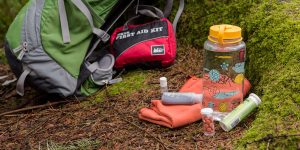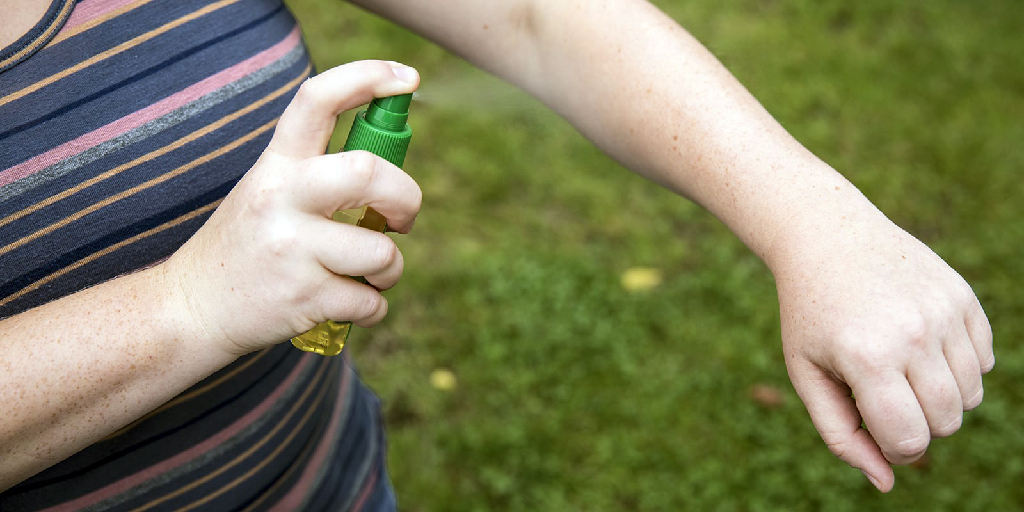Latest News
Share this post:
Getting sick at home is bad enough, but catching a bug in the backcountry, miles away from your cozy bed, can feel like a serious setback. But, by being able to recognise the signs and symptoms of an illness, you can come up with a proper treatment plan that can help you feel better and possibly even let you continue on your trip.
What to Do if You Get Sick in the Backcountry
-
-
-
-
- Examine the signs and symptoms: Things like fever, headache, muscle aches, coughing and sore throat often point to a flulike illness. Abdominal discomfort, cramping, nausea, vomiting and diarrhoea are telltale signs of gastrointestinal problems. Recognising these signs and symptoms will help you develop a treatment plan.
- Consider treatment options: Treating a flulike illness usually means letting it run its course while getting plenty of rest. Hydration is the main focus when treating gastrointestinal problems. Some medications can provide relief, too.
- Evacuate if necessary: When the signs and symptoms are severe, such as a high, persistent fever or the inability to keep fluids down, it’s time to head out and get to a doctor.
- Prevent future illness: To help you avoid getting sick on your next adventure, practice good hygiene and always disinfect your drinking water.
-
-
-
Note: The symptoms of flulike illnesses and gastrointestinal problems are common to many other medical conditions and can occasionally be the initial indicators of more serious ailments. If your condition lingers or worsens, consult your physician for a complete examination.
Examine Signs and Symptoms
The most common sicknesses to hit backcountry travellers fall into two broad categories: flulike illnesses (colds, upper-respiratory infections, sore throat, fever, headaches) and gastrointestinal problems (nausea, vomiting and diarrhoea). By being aware of the signs and symptoms associated with these conditions, you’ll be able to decide how to proceed with treatment.
Signs and Symptoms of Flulike Illnesses
“Flulike illnesses” is a catchall term for a variety of common ailments, including colds, sore throats, upper respiratory infections, fevers and headaches (it does not include the influenza virus, which is a specific medical diagnosis). Flulike illnesses are often a viral infection of the nasal passages and throat, which is why they usually include a runny nose, sore throat, coughing and sneezing.
In many cases, a patient with a flulike illness will display these signs and symptoms:
-
-
-
-
- Fever
- Headache (note that headaches are also commonly caused by dehydration and altitude)
- Muscle aches and malaise
- Nasal congestion and coughing
-
-
-
If the signs and symptoms include lots of coughing, sneezing and nose blowing, the patient may have an upper-respiratory infection (URI), which is a viral or bacterial infection that affects the sinuses, pharynx, larynx or bronchi. Here are indicators of a URI:
-
-
-
-
- Increased mucus production
- Cough (sometimes producing phlegm or mucus)
- Sore throat (note that a sore throat can also be caused by simple dryness due to altitude and dehydration)
- Fever
- Malaise
-
-
-
Signs and Symptoms of Gastrointestinal Problems
If you’ve ever been stricken with a “stomach bug” or “stomach flu” that’s left you dashing for the bathroom, then what you probably had was gastroenteritis. Gastroenteritis is inflammation of the gastrointestinal system caused by a virus, bacteria or parasites.
A patient suffering from a mild case of gastroenteritis will likely report these signs and symptoms:
-
-
-
-
- Gradually increasing abdominal discomfort
- Intermittent cramping
- Loose stools
- Frequent bowel sounds
- Nausea and vomiting
- Sometimes a low-grade fever
-
-
-
With severe gastroenteritis, the patient will typically experience these signs and symptoms:
-
-
-
-
- Persistent and worsening pain over 24 hours, especially if the pain becomes localised and constant
- Inability to tolerate fluids
- Stools with blood or mucus
- Signs and symptoms of shock
- Fever above 102°F
-
-
-
Treatment Options

Based on the signs and symptoms that a patient is displaying, you can develop a treatment plan that will hopefully bring some relief and let you continue on your way. However, sometimes the thought of another night spent in a tent while sick can be unbearable, so know that you always have the option of cutting a trip short and heading home.
Treatment Options for Flulike Illnesses
Many flulike illnesses can take a week or more to clear up. The aim when treating these ailments is to help the patient feel better by treating the symptoms while the illness runs its course. Here’s how:
-
-
-
-
- Take medications: Pain medications such as acetaminophen, aspirin or non steroidal anti-inflammatory drugs can bring relief for headaches and muscle aches. Decongestants and anti-cough medications can be used with upper-respiratory infections.
- Rest and be patient: If you’re on an extended trip, you may have to alter your itinerary so the sick individual can lay low until they feel better. For a shorter trip, most of the recovery will take place at home.
- Hydrate: Drink plenty of fluids. Water, hot tea and soups are good options.
- Practice good hygiene: To limit the spread of the illness, everyone in the group needs to wash their hands frequently and always before handling food. Cover your coughs and sneezes, too.
- Leave if necessary: Don’t hesitate to leave and seek medical help immediately if symptoms worsen.
-
-
-
Treatment Options for Gastrointestinal Problems
Most people will get over a case of mild gastroenteritis in about 1–3 days, which means they can often continue on with a trip that lasts longer than that. Here are some ways to treat mild gastrointestinal problems (severe gastroenteritis requires evacuation and a visit to a doctor):
-
-
-
-
- Drink lots of fluids: Frequent diarrhoea and vomiting can lead to severe dehydration. If there has been frequent vomiting, consider using an electrolyte replacement solution.
- Take medications: For persistent diarrhoea, antidiarrheal medication can provide much-needed relief. Antiemetic medications can help with nausea and vomiting. In some cases, antibiotics can provide relief, but it’s best to consult a doctor prior to your trip to discuss the use of antibiotics.
- Eat bland foods: To avoid further stress of the gastrointestinal system, eat bland foods that are soft, not spicy, low in fat, low in fiber and easy to digest. Things like bananas, cooked vegetables, broth, plain crackers and smooth peanut butter are good ideas. Avoid foods such as beans, lentils, dried fruit and gas-producing vegetables like broccoli, Brussels sprouts and cabbage.
- Leave if necessary: Again, don’t hesitate to leave and seek medical help immediately if symptoms worsen.
-
-
-
Evacuate if Necessary

One of the challenges with treating illnesses in the backcountry is determining when things are bad enough that you need to evacuate. Here’s some direction on when you should head home and see a doctor.
Evacuation Guidelines for Flulike Illnesses
If you or someone in your group experiences any of these signs or symptoms, evacuation is required:
-
-
-
-
- A fever persists for more than 48 hours or is high (greater than 102°F/39°C).
- The patient develops a stiff neck, severe headache, breathing difficulty or wheezing.
- Signs or symptoms of pneumonia develop (look for shortness of breath, decreasing exercise tolerance, worsening malaise and weakness with a predominance of cough)
- The patient is unable to drink fluids for more than 48 hours, especially if there is diarrhea, fever or vomiting.
- The sore throat prevents the patient from swallowing water and maintaining adequate hydration.
- The sore throat is accompanied by a fever and a beefy red throat with white patches. (In this case, you can suspect strep throat, an illness caused by bacteria. A doctor will need to do a test to confirm if it’s strep or not.)
- The headache does not respond to treatment, is sudden or severe or is associated with an altered mental status.
-
-
-
Evacuation Guidelines for Gastrointestinal Problems
With serious cases of gastroenteritis, evacuation is required. It’s time to head home if you or someone in your group experiences any of these symptoms:
-
-
-
-
- Diarrhoea that’s bloody or persists despite treatment, or the patient is unable to hydrate.
- Vomit is bloody or the consistency of coffee grounds, or the patient is unable to hydrate.
- Abdominal pain persists or worsens over 24 hours.
- Increasing fever.
- The patient is unable to tolerate fluids for more than 24 hours, especially if accompanied by diarrhoea or vomiting.
-
-
-
In the case of an evacuation where the patient requires assistance, you may need to call for help. Cell coverage can be spotty in the backcountry so it’s wise to have a backup to a cellphone.
Preventing Illness During Backcountry Trips

Being sick is never fun, but it can feel even worse when it interrupts an outdoor adventure. To help prevent future illness, follow these common tips:
Practice good hygiene: Just because you’re outdoors doesn’t mean you should tolerate poor hygiene. The spread of gastrointestinal illnesses and flulike illnesses can often be blamed on contaminated hands. It’s important to always wash your hands with soap and water or use hand sanitiser prior to handling food and after going to the bathroom.
Disinfect your water: Waterborne threats such as protozoa, bacteria and viruses can make you very sick. Don’t take any chances with untreated water; purify or filter water before drinking it. Learn how in our article.
Cover your coughs and sneezes: Flulike illnesses can be spread as an aerosol, so if someone is sick, it’s important that they cover their coughs and sneezes. Use a tissue, handkerchief or elbow.


 Collecting and Propagating Seeds
Collecting and Propagating Seeds China on a Plate: The Flavours of a Nation (with a Spotlight on Sichuan)
China on a Plate: The Flavours of a Nation (with a Spotlight on Sichuan) Kinesiology Cross Patches
Kinesiology Cross Patches Camaraderie On a Walking Tour…
Camaraderie On a Walking Tour… How E-Biking Has Transformed Biking Tours
How E-Biking Has Transformed Biking Tours








